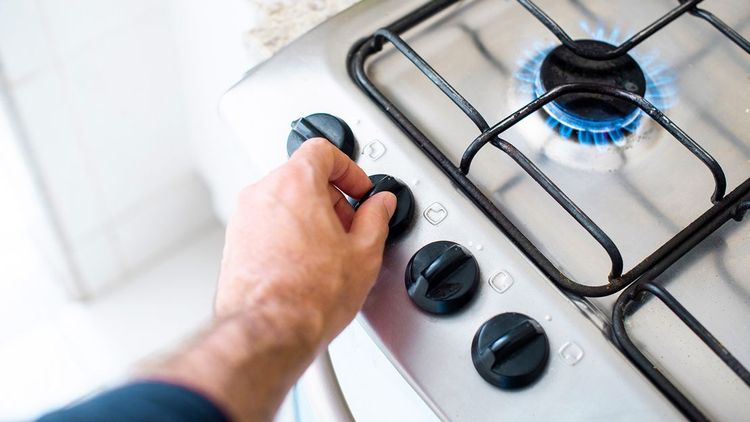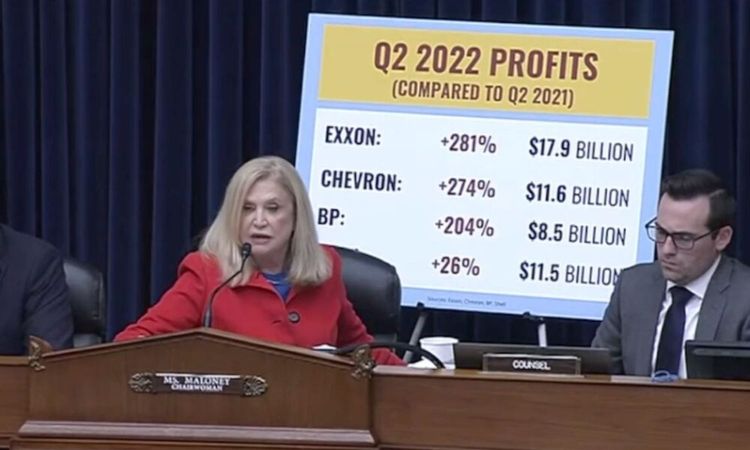Drilled Down: Old School Climate Denial Is Back
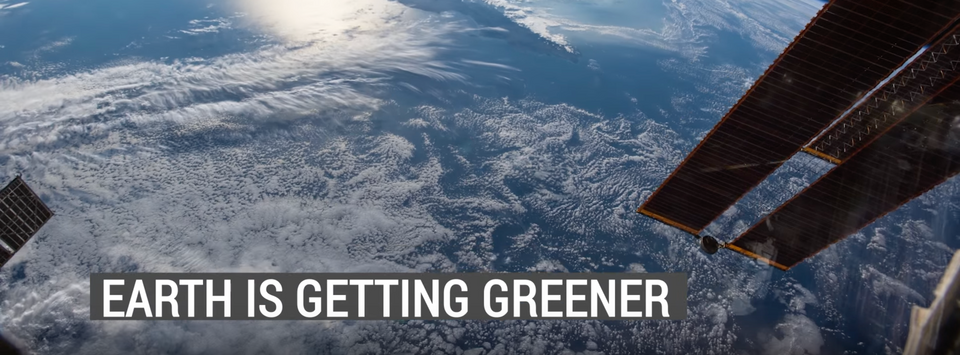
Over the past month or so, thanks in large part to the work of reporter Michael Thomas, the Internet has rediscovered an effort that's been underfoot for more than a decade: the coal-funded attack on clean energy. In a few viral Twitter threads, Thomas has focused on the work of two longtime anti-renewables campaigners, John Droz and Kevon Martis, who have spent the past 15 years or so fighting renewable energy projects at the local level (and convincing and training others to do the same).
I first heard about Martis and Droz through Scott Peterson at Checks and Balances Project, back in 2018 when he was digging into the sudden, successful backlash against wind energy in Ohio and Michigan. They're still going strong (Droz is now a member of the CO2 Coalition as well) and, according to Thomas, gaining steam. I suspect we'll see a resurgence of anti-renewable activity as the fossil fuel industry looks to leverage the Inflation Reduction Act incentives for gas and dampen the benefit of the Act for renewables. So it's a good time to look at where that work fits in the broader climate countermovement.
When I look at both Droz's and Martis's presentations, what I see are the fingerprints of a guy who predates both of them in the anti-climate battle: Steve Milloy. Which is interesting because Milloy also happens to be the highest-paid staffer at the same organization where Martis is a senior fellow: Energy & Environment Legal Institute (E&E Legal), previously known as the American Tradition Institute—the organization that went after climate scientists like James Hansen, Michael Mann, and Katharine Hayhoe in the early aughts, trying to discredit them, and climate science in general. E&E Legal is also affiliated or sharing counsel with the Energy & Environment Action Team, the Free Market Environmental Law Clinic, and the Competitive Enterprise Institute. Droz, Martis, E&E, and CEI turn up on all sorts of documents and letters together, too, and Milloy and Droz are both frequent speakers at Heartland Institute events.
According to the most recent 990 on file for E&E Legal, Milloy is pulling in close to half a million dollars a year from his role as a board member and senior policy fellow there. Their "Videos" section is dominated by Milloy's regular appearances "debunking" climate science on Fox News, Newsmax, and OAN. E&E Legal has received funding from Arch Coal, Peabody Coal, and the Koch brothers-funded Donors Trust.
Lately I've been thinking a lot about two things the media and much of the climate movement tends to dismiss as long past—old-school climate denial and the coal lobby. Both are not only still around, but seem to be having a bit of a renaissance. This ad that the Heartland Institute started running earlier this month, for example, looks like something you might have seen in the early 2000s:
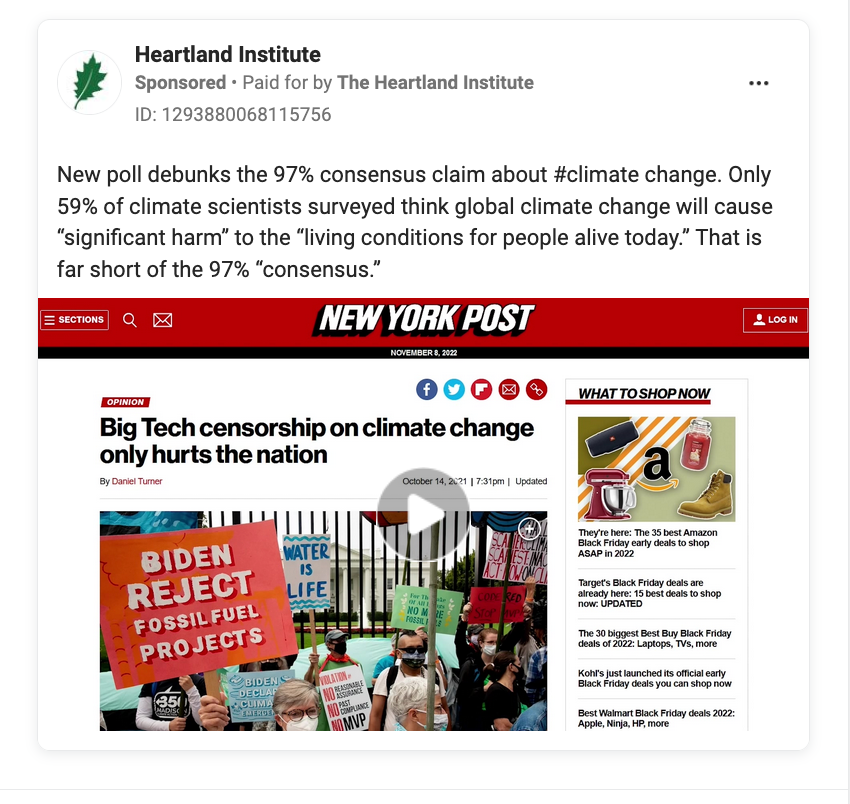
And for at least a couple of decades, Heartland's longtime warrior Milloy has been at the intersection of the coal lobby and climate denial. Although he's often laughed off as something of a clown (he likes to call environmentalists "watermelons," green on the outside but red in the middle, and go on social media tirades against the "climate bedwetters"), Milloy is also lurking in the background of the climate denial resurgence.
Among Milloy's many claims to infamy is the fact that he is the architect of the proposed EPA "secret science" rule, something he's been pushing since the late 1990s. As Naomi Oreskes, who covered Milloy in her book Merchants of Doubt, pointed out in 2018, the proposal seemed reasonable on its face but was actually intended to do something Milloy has wanted to do for decades: erode the credibility of epidemiological studies, in order to erode the credibility of science, period. For Milloy, as with everything he does, it was also in service of his longtime goal: rolling back air pollution regulations. He came very close to getting his way under Trump, and I suspect we haven't seen the last of it.
A core Milloy belief is that EPA scientists are basically biased in favor of more regulation, and therefore can't be trusted. It's an idea that comes up over and over in Martis's and Droz's presentations, too. Check out the cover of one of Droz's presentations, taking aim at a state-level environmental policy, for example:
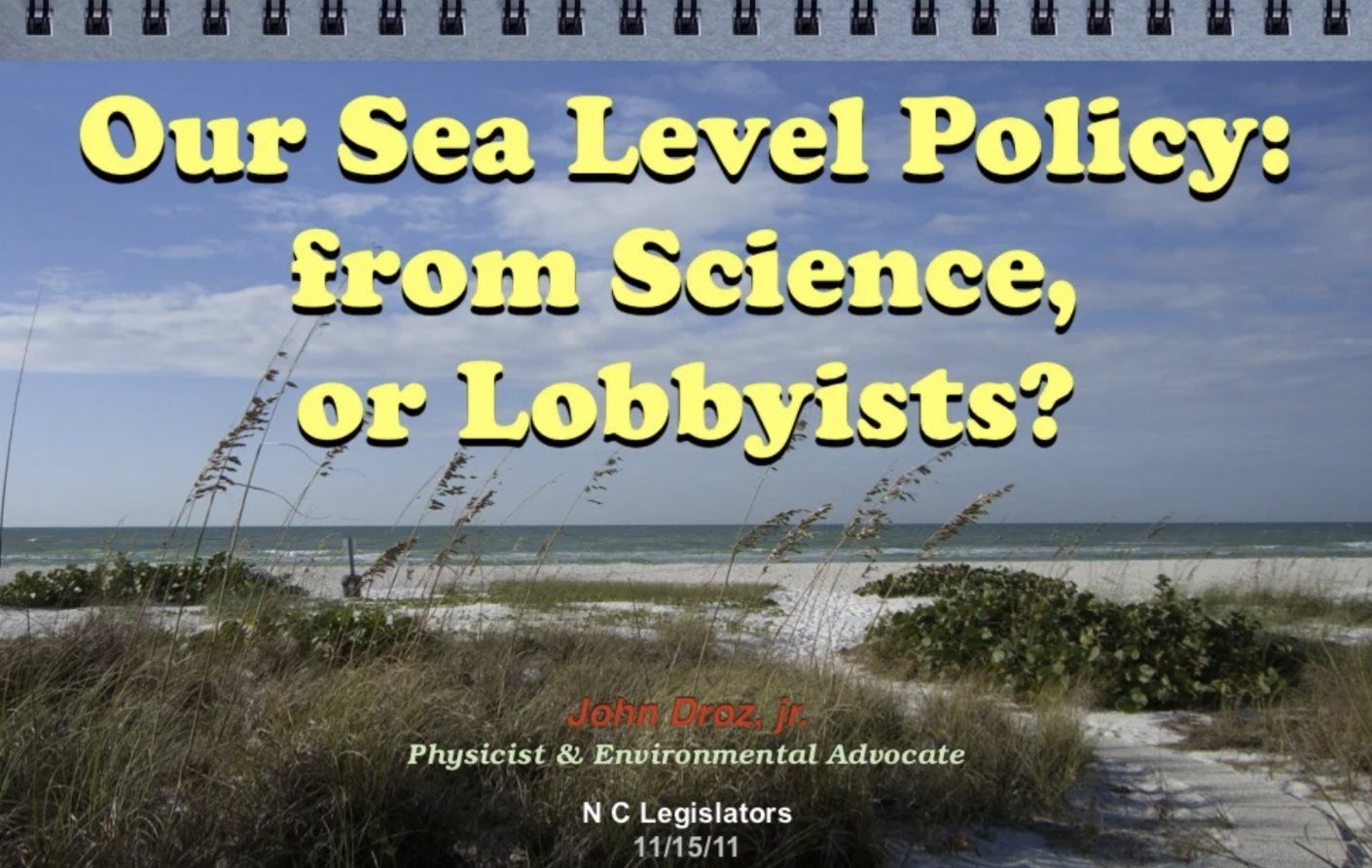
and compare it with the way Milloy talks about federal environmental policy in one of his many Wall Street Journal op-eds:
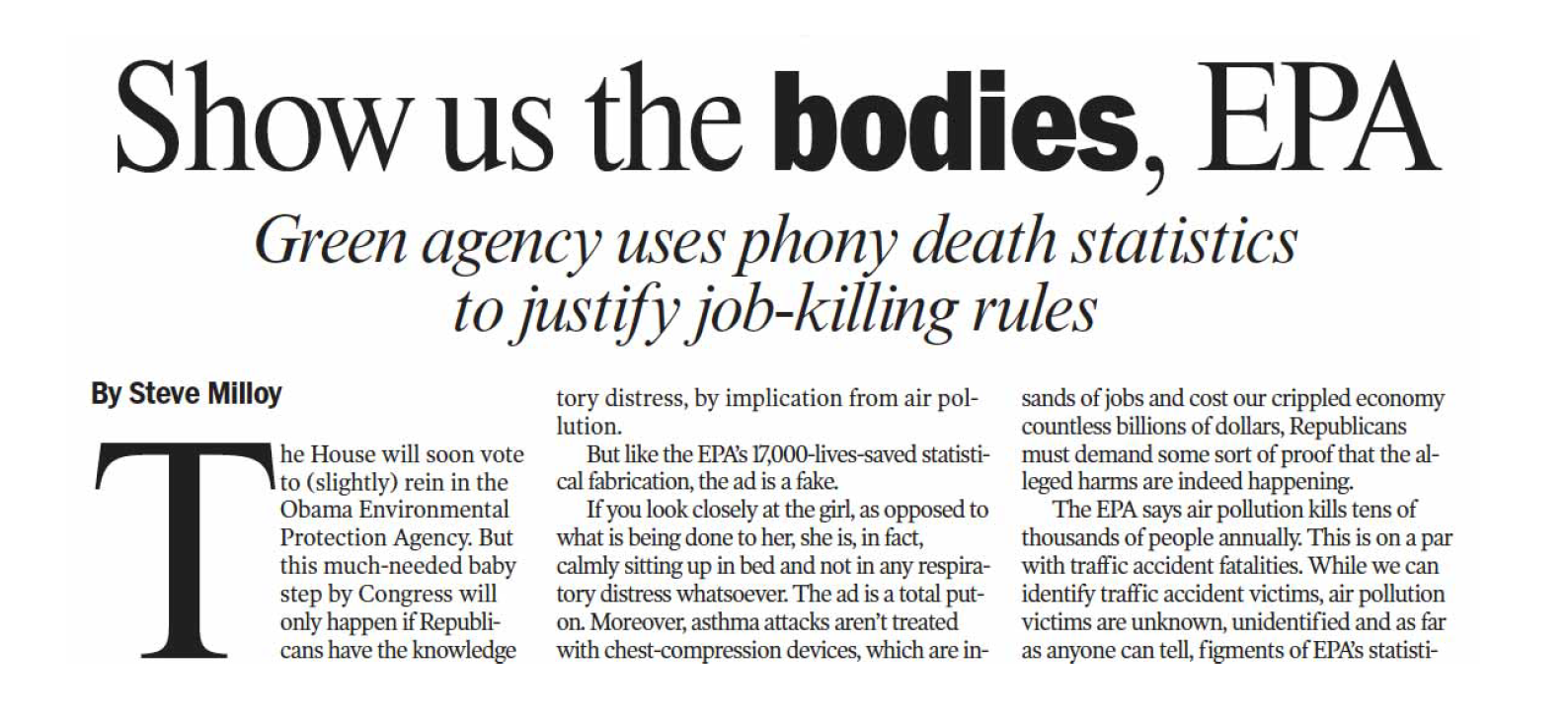
I interviewed Milloy a couple years back, when he was basking in the glory of multiple wins under President Trump, posting pictures with his pals inside the Environmental Protection Agency and bragging about "eating the greens' lunch."A perfect example of the bizarre place Milloy holds on the right: he says he was a member of Trump's EPA transition team, and the leader of that team, Myron Ebell, the Director of Global Warming and International Environmental Policy at the Competitive Enterprise Institute, confirmed that claim to me, but Trump's EPA would never confirm nor deny his presence on the team. According to Milloy, though, he "was the only person on the team with a background in EPA science, so I was brought on to write the science part of the transition plan."
When reporter Paul Thacker covered controversial toxicologist (and Milloy pal) Ed Calabrese's studies being embraced by the Trump EPA, he told me he was surprised to see how much respect the rightwing climate denier universe showed Milloy. "He's like one of their warriors, that's one of the things that really struck me when I was writing about these Calabrese emails," Thacker told me at the time. "He's sort of their prince."
During the Trump administration, the prince of the climate deniers made a lot of his long-held dreams come true. There was EPA declining to tighten their air pollution standards, the rollback of mercury regulations, and then the 2018 disbanding of the EPA's Particulate Matter Review Panel, or as Milloy put it to me: "Blowing out that particulate matter sub-panel, another huge win."
"I’ve got huge wins under my belt, it's been tremendously satisfying for me,” he said.
When I asked him if he thought Republicans would take up the secret science proposal again, if and when they regained power of the government, Milloy replied, "That is on my agenda."
Also on the agenda? De-funding the EPA and handing environmental regulation over to the states. Milloy says the environment in which the EPA was created 50 years ago is not the one we're living in today. "The environment is clean," he says. "We know what's dangerous and what is not, or how to quickly determine that issue when it arises. Every state has a strong environment agency. The U.S. EPA should be dramatically reduced in size and authority, with most of its responsibilities delegated to states."
Advocates who work on environmental issues at the state level disagree. Take methane regulations: "Nobody has the staff resources to regulate methane emissions or VOCs [volatile organic compounds] from oil and gas drilling," says Sharon Wilson, who tracks methane emissions for the nonprofit Earthworks. She points to New Mexico as a recent example. "New Mexico just passed methane rules that look really good on paper. But they have five employees—five—to go out and inspect and regulate the entire state's oil and gas industry, which is expansive."
More than anything, of course, Milloy wants to win his lifelong battle against air pollution regulations. One of his earliest jobs was running The Advancement of Sound Science Center (TASSC), which was created by Philip Morris and their PR firm APCO in the 1990s to deal with the mounting evidence that linked secondhand smoke and, more broadly, indoor air pollution, to cancer. The secondhand smoke issue brought the tobacco industry together with lots of other industries that were worried about air pollution regulation—automotive, manufacturing, and, of course, fossil fuels. Which is how Milloy, working for the tobacco industry, became one of the first leaders of the climate countermovement.
And fairly early on, Milloy connected the dots on air pollution and climate change, especially around the subject of particulate matter, microscopic particles in the atmosphere that are tiny enough to be inhaled. Particulate matter and greenhouse gas emissions are mostly generated by the same activity—the combustion of fossil fuels—which is why Milloy has said “PM2.5 is more important than CO2 on climate regulations.” His fear was that while climate policy had proven easy to beat back, industry was unlikely to be so lucky with air pollution; confusing people about atmospheric carbon is one thing, convincing them to embrace dirty air is something else altogether.
That sub-panel that Milloy "blew out" went ahead and published their work in the New England Journal of Medicine shortly after Trump left office. “We unequivocally and unanimously concluded that the current PM2.5 standards do not adequately protect public health," they wrote. Under Biden, the Clean Air Scientific Advisory Committee (CASAC) agreed, and the EPA is in the process of strengthening the standards. According to Milloy, who backed a suit against the EPA trying to force the EPA to reinstate Trump appointees to the CASAC, it's all predicated on fraudulent science. And if he were just one dude shouting on Twitter, it would be easy to dismiss, but this is a guy the Republican Party is likely to tap to restructure—or dismantle—the EPA if and when they regain power.
“What I think the right wing has done is try to saw the legs off the infrastructure that holds up environmental decision-making,” said Eric Schaeffer, a longtime EPA employee-turned-whistle blower and executive director of the nonprofit Environmental Integrity Project. “It’s hard to attack clean air and clean water, they don’t want to do that, so they suggest the science is flawed, make it about ‘secret science.’ It’s decades of that, and then you wind up in the middle of a pandemic and it’s like … we’re seeing right now the impacts of a decades-long campaign to undermine science.”
Although it was a front group for Philip Morris, TASSC also included oil, chemical, and automotive companies, like Exxon, Dow, and GM, all working together to counteract efforts to regulate air pollution. In 1996, RJ Reynolds Tobacco Company was a funder of Milloy's website, JunkScience.com, which he still runs today. Memos outlining the creation of TASCC could pass as mission statements for Milloy's enterprise today, too. "It must be part of a larger mosaic that concentrates all of the EPA's enemies against it at one time."
TASCC operated under the principle that if an economic argument can't keep regulation at bay, your next best move is to undermine the science that regulation is based on. And almost as soon as he started working on air pollution, Milloy had new science to contend with: a 1993 epidemiological study that looked at 8,000 people across six American cities and found that exposure to fine particulate matter—PM2.5, or soot—was correlated to reduced life expectancy. Not what you want to hear when the companies you work for sell the products that produce PM2.5: cigarettes, cars, coal, and oil.
Milloy started by picking apart the methodology: the subject group was too small, researchers hadn't controlled for other factors, and epidemiology's reliance on observational data makes it suspect in general. He manufactured controversy around the researchers keeping their data private. And he targeted the scientists themselves, particularly lead researcher Steven Dockery and one of the statisticians involved, C. Arden Pope, calling them fraudsters.
But it's hard to discredit scientists who are, themselves, incredulous of their findings. “In all honesty, we were not even willing to lick the stamp on the manuscript [of the Harvard Six Cities study] because the result seemed so… It wasn't that it was absurd. It's just that it was a bit bigger than we expected, and we were a bit concerned about it,” Pope told me. That led the researchers to ask the American Cancer Society to re-run the analsysis with their own, independently collected cohort of subjects.They got similar results, and so did the Health Effects Institute, an organization half-funded by the EPA, and half-funded by the automotive industry. Milloy kept fighting it, but nothing worked. In 1997 the EPA passed its first regulation on particulate matter. It has tightened those regulations every eight years or so, right up until Scott Pruitt decided not to in 2018 (one of the Trump EPA moves that Milloy counts as a personal win).
Also during the 1990s, Milloy produced the paper that would become the basis for the "secret science" proposal at Trump's EPA. He was contracted by the Department of Energy to write it, but says when he submitted it to an EPA full of Clinton appointees, they wouldn't publish it, "because I said regulations were based on politics and not science. So, I decided to cut my contract and publish it on my own," he said. "It got picked up in the Wall Street Journal and that’s what sort of launched me into whatever I am today.”
25 years later, he "put it in the transition plan and talked with Pruitt about it,"Milloy said.
It wasn't new science or a new strategy that handed Milloy a win after 25 years. It wasn't new evidence that finally vindicated him, it was just…access. Being on the Trump EPA transition team enabled him to smuggle in all sorts of ideas from his pals, including James Enstrom, a tobacco-industry funded scientist who published one of the few studies contradicting the Six Cities data. While Milloy points to Enstrom’s study as proof that Pope et al are peddlers of “junk science,” Pope points to the 25 years worth of additional studies that have consistently replicated the Six Cities result, and says Enstrom "has a six year follow-up that he published in this sort of obscure journal a year or so ago. And he just barely doesn't get statistical significance. And so reports that [PM 2.5] has no effect.”
That obscure journal that put out Enstrom's paper is published by another friend of Milloy's, that toxicologist I mentioned before, Ed Calabrese, whose (mostly industry-funded) research focuses on the idea that a little bit of pollution and radiation are actually good for you. Calabrese's journal, Dose-Response, where he publishes his own research, published Enstrom's PM 2.5 study in 2017. When Trump EPA administrator Scott Pruitt announced in 2018 that the agency would not strengthen the regulations on particulate matter, he cited Enstrom's study as justification for the science on PM2.5 being "too uncertain" to act upon.
Almost as soon as the U.S. government began to mandate quarantine in response to the Covid-19 pandemic, Milloy took to Twitter to warn that Covid lockdown would lead to climate lockdown, and to take aim at one of his favorite scientific targets: epidemiology.
Aside from political ideology— Milloy says that while he started out apolitical he’s now a “full blown conservative, libertarian, free market guy,”—there’s also a PM 2.5 connection with Covid. Early in the pandemic, Harvard released a study correlating PM 2.5 exposure with increased risk of death from the virus.
Milloy's wins on PM2.5 under President Trump illustrate just how much of the U.S. regulatory apparatus the administration was able to dismantle in a short amount of time, but they're an indicator of something else too: a willingness to go further than conservatives ever have in the battle against environmental regulation, to actually go ahead and attack clean air and water. Why? In a word, climate. If the Supreme Court does, as many expect it to, eventually, overturn the precedent set by Massachusetts v EPA, which granted the EPA the right to regulate greenhouse gas emissions, one of the remaining ways for the EPA to get at CO2 is to regulate particulate matter. Both are emitted via the combustion of fossil fuels. Which is a big part of the reason Milloy, a longtime lobbyist for coal, has focused on blocking PM 2.5 regulations since 1990. As he put it to me recently: "PM2.5 is the most important backdoor science scheme for regulating fossil fuel emissions."
I don't recall seeing a lot of anti-renewables rhetoric from Milloy over the years, but since his arrival at E&E in 2016, it's become a mainstay of his public presence. Just this week, in fact, he described proposed onshore wind farms in the UK with a list of Kevon Martis's greatest hits, warning that it would "junk up beautiful countryside with ugly, expensive, climatically pointless and bird-killing wind turbines."
Another sign of what's next: Milloy, Droz, E&E Legal and the Competitive Enterprise Instiute have joined the fight against Environmental, Sustainability, and Governance (ESG) guidelines in the finance industry as well. Milloy says it's a "leftist scam." And E&E Legal, Droz, Heartland and CEI teamed up on a letter to the SEC recently, arguing that: "The Commission’s current proposal [to standardize climate disclosures in finance] is similar to much previous ESG activism in that it uses the language of business and financial management in order to suggest that it seeks practical, prosperity-enhancing goals, but is actually animated by environmental theory that is hostile to hydrocarbon energy and industrial development per se for moral and ideological reasons."
Groups like CEI, E&E Legal, Heartland Institute, and various others in the free-market, libertarian universe sprung into action against ESG in 2020 after mostly ignoring it for years. It was the SEC's move to standardize climate risk disclosure and ESG guidance, to make it auditable and enforceable, to, in effect, finally make ESG real that was the problem. Prior to the Commission's finding in 2020 that inconsistencies and fragmentation in climate-related disclosures had led to just the sort of confusion amongst investors that the SEC was created to address, ESG was just a handy greenwashing tool for polluting companies and industries. It rarely, if ever, caught the attention of these groups.
No surprise to see Milloy and E&E Legal hopping onboard now though: like all of their other efforts, the anti-ESG push has been led and largely funded by coal. Earlier this year, Documented published its investigation into how state treasurers in coal states became the frontline warriors in this fight. Attorneys general in those states have gotten involved now, too.
There's a small group of lone wolf climate denier dudes whose work I follow because it's a pretty decent bellwether of where the climate countermovement is headed next. Milloy is one of them, and his talking points in recent years have cycled through the following themes: climate change is a hoax, Covid (and related mitigation measures) is a hoax, ESG and renewables are a scam, and Americans should be concerned about election integrity. By connecting all of these to conservative identity, operatives like Milloy, and the various groups they work with and for, have managed to breathe new life into ideas thought to be buried in the past, from the notion that CO2 is actually good for the planet to the idea that wind turbines are dangerous for birds to plain old garden variety climate denial.
***
As a longtime climate journalist on the accountability beat, I often see things come up in headlines that I recognize from past research, or that I realize I've got additional background info or reporting on. When that happens, I'll be sharing deep dives like this with members. At some point, I might need to put it behind a paywall, but I'd prefer not to! If you can afford to support our ongoing work on these issues, please consider it.



